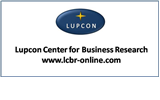LCBR Manuscript Submission Guidelines
By submitting a paper, the author(s) imply that they have the copyright to the respective work and that no third parties object to their submission of the work in the conference proceedings. If the authors wish to publish their paper in a journal of a third party, they should consult with the respective journal to determine if a publication of the work in conference proceedings is not in conflict with the journal’s guidelines, especially with respect to some journals’ requirements that papers should be unpublished if they are to be considered for a journal publication. Furthermore, the submission of work to the conference proceedings implies that all co-authors agree to the publication and that the institution at which the work was carried out does not object to the publication. The publisher will not be held legally responsible if there are any claims for compensation. The author(s) submitting the work is solely responsible for any damages.
Authors who include figures, pictures, tables, or text passages that have been published elsewhere are required to obtain permission from the owners of the respective copyrights to include them in the work. The author(s) must submit the relevant documentation about the permission to the LCBR. In the absence of such documentation, it is assumed that the material originates from the author(s).
File Format
Manuscripts should be submitted in Microsoft Word format (.doc or .docx).
Spelling and Punctuation
1) Choose either American or British English spelling consistently throughout the paper.
2) The text must be error-free in terms of grammar, punctuation, and spelling.
Page Layout
1) The page should be A4, which means that the full physical page size is 210mm x 297mm.
2) The headers and footers must be empty.
3) You are free to use footnotes for supplementary explanations.
Text Format
1) The entire document must be single-spaced and grouped-style (justified).
2) Always use Times New Roman
3) Use font size 11 throughout the paper.
Title and Headings
1) Start the Paper with the main title (font size 11 bold, and left-justified)
2) Leave one empty line (font size 11) after the title, then place the name(s) of the author(s) while including their institutional affiliations (name of university (comma) country) in parentheses. For papers with multiple authors, each author should occupy a line, with no empty lines between them.
3) Leave three empty lines before the first line of the text.
4) The following guidelines for subheadings apply:
- A-level subheadings should be font size 11, bold, underlined and left-justified (leave two empty lines before and one empty line after the subheading)
- B-level subheadings should be font size 11, bold, and left-justified (leave two empty lines before and one empty line after the subheading)
- C-level subheadings, if needed, should be font size 11, italicized, and left-justified (just leave one line before and after a C-level subheading)
Content
The paper should have the following order of content:
Abstract
Introduction (this is an A-level subheading)
Main Body of Paper (there may be several A-level subheadings in the main body)
Conclusion (again, this is an A-level subheading)
Bibliography (“Bibliography” formatted as A-level subheading)
Tables and Formulas:
Tables and formulas may be placed in the main text close to the text segment in which they are mentioned, or in the appendix (you may freely choose). They should be inserted in graphic form, if possible, to facilitate re-sizing for editorial purposes (i.e. in JPG format).
References
References: In the text:
In text references are needed after direct quotations or indirect quotations. References in the text should be cited in parentheses stating the last name of the author and the year of publication.
For example: (Meyer 1995) or (Johnston et al. 2008)
When quoting a direct quote, please indicate the quoted page as follows: (Mayer 1995, p. 167)
NOTE: The template file (click here) contains examples of citations.
References: In the bibliography:
Journal article:
Mayer, P. (1995). Marketing Research in the Case of East Asian Companies. Journal of Example of Business Research, 41(2), 235-251.
Book:
McCain, S. & Breyer, A. (2002). Basics of Managerial Theory. City. Publishing House Company.
Book Chapter:
Wolf, C. (2000). The Role of Crises in Renewing Companies. In Rice, E. (Ed.), Essays in Crisis Management (345-356). City. Publishing House Company.
Note: If an author has multiple publications in one year that are to be quoted, please use the following reference system to distinguish between the different publications: (Meyer 1995a) and (Meyer 1995b)
